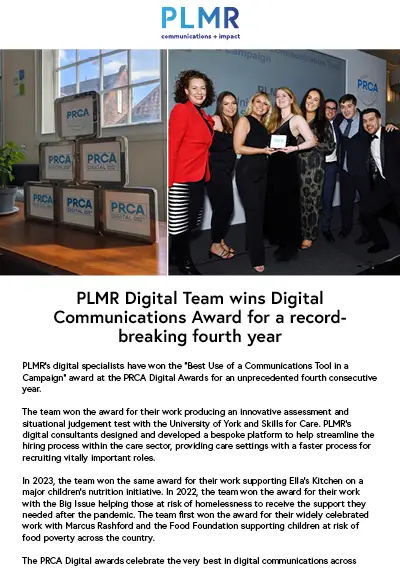Higher education institutions (HEIs) are often the epicentre of groundbreaking research, much of which has the power to shape industries, inform policies and transform lives. Distilling key findings of research and translating them into compelling accessible narratives is essential to ensure they reach the right audiences and have the intended impact.
For HEIs, communicating research is imperative for several reasons. This includes securing additional research funding, attracting students and staff and growing your reputation as a high-quality research institute to name a few. However, the process of translating technical information to resonate with a range of audiences can be as complex as the research itself. Having a methodical and clear approach is key, so here are our five top tips on how to communicate your research effectively.
Step 1: Identify your communication objectives
All communications should have a clear purpose. Therefore, whether you are aiming to create a press release, blog or social media content to promote your research, it is first essential to define the objective you are trying to achieve – are you aiming to inform, persuade, or educate?
This is important because your objective will shape how you position your content. For instance, if you’re working to attract additional research funding, emphasise your experience and credibility and how your research solves real-world problems. Alternatively, if your objective is to inform the sector or industry you work in, then highlight the methodology and any groundbreaking outcomes and how this impacts audiences. Additionally, if your goal is to attract more students to your university, focus on the high quality of your research and any involvement of undergraduates or postgraduates.
By aligning your messaging with your objective(s), you can create a more compelling narrative that drives engagement and action.
Step 2: Understand your audience
Once you have identified your objective and the purpose of promoting your research, you can then profile your audience. Tailoring the tone, language, and level of technicality to match your audience’s familiarity with the subject will ensure your message resonates.
For example, a story intended for industry professionals may benefit from more technical detail, while content for the general public should be free from jargon and overly complex explanations. The more audience-centric your approach, the more impactful your messaging will be.
Step 3: Assess your media channels
A well-crafted story is only effective if it reaches your target audience. Therefore, identifying and leveraging the right publications and media channels is crucial in maximising your research’s impact and achieving your objective(s).
Determine which earned and paid platforms best align with your audience – whether it’s sector-specific publications, mainstream news outlets, regional media, social media channels or age-specific platforms. Additionally, you can leverage owned media, such as your institution’s website, newsletters and social media to expand your reach.
Step 4: Conduct a deep dive into the research
Now, this may seem obvious but to be able to clearly communicate the key findings and newsworthy aspects of research, you must have a thorough grasp of the study, the outcomes and the purpose. Sometimes the abstract isn’t enough – those reading it need to fully understand the full extent of the conclusions, the context around the study and its impact.
Consider key questions such as ‘why is this important in today’s society?’ and ‘how does it compare to similar studies in the field?’ and ‘what will its impact be?’. Think about whether it’s the first research of its kind, if you’re revealing novel data and whether it opens doors to future research or findings. Don’t feel that you must gain all of this from the paper itself. Often studies can be long and complex so work with research teams to gain a full understanding of their work and why it really matters to target audiences.
Positioning the ‘so what’ at the forefront of your understanding will allow you to clearly translate the focus of the research and its findings while providing context of the broader trends and real-world challenges to strengthen the relevance and appeal of the story, particularly for media.
Step 5: Pitching
Once you have your story ready which summarises your research and is tailored for your audience, it’s time to pitch to your target publications to amplify the reach among your target audiences. While journals can be a powerful starting point, landing coverage in media can be effective in reaching wider audiences and creating more noise and recognition for the research and its findings. Building relationships with journalists and influencers in the field over time will be essential to securing a steady drumbeat of coverage and also to enhance your visibility and credibility as a HEI.
You can also consider creating multiple content formats to reach your audiences in different ways. This can include repurposing content for blog posts, infographics, videos and social media posts in addition to more traditional media coverage. The goal is to make the research not only accessible but also engaging, ensuring wider reach and deeper impact.
Summary
Turning research into marketable content and coverage requires a strategic approach which accounts for audience and research context to create a compelling story that captures media attention. By tailoring your approach, setting clear goals, fully getting to grips with the findings and understanding the media landscape, using simple and digestible information, and leveraging the right media channels, you can transform academic findings into impactful narratives that grab the interest of your audience. In a busy and competitive research landscape, this approach is essential to ensure that the significance of your research is fully understood by the people you are trying to reach and the outcomes you want to achieve.






